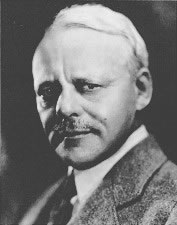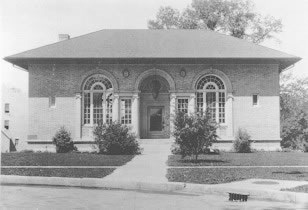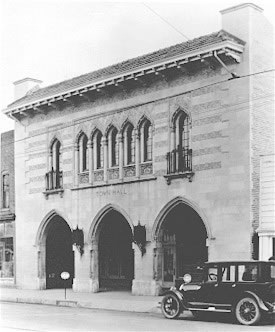Jules Jacques Benedict

Jules Jacques Benedict. Photograph courtesy of Denver Public Library.
He was talented, cultured, eccentric, flamboyant, practical, difficult, opinionated, generous, temperamental, considerate, gentleman farmer, man-about-town. He was artist, poet, and one of the foremost architects in the West. He lived in Littleton. Jules Jacques Benois Benedict was American born, but educated in Paris at the Beaux-Arts School of Architecture. His designs often used graceful arches and ornamental detail characteristic of Italian Renaissance Revival with French and Mediterranean influences. But he also fashioned a local church in English Gothic with an English Tudor sanctuary. And he lived in a Dutch-style farmhouse.
Benedict married June Louise Brown in Denver on 20 February 1912. She was the daughter of Junius Flagg Brown, junior partner with brother, John Sidney Brown, in the pioneer mercantile business that made their families millionaires. The wedding was at the home of the bride's mother. Miss Brown was described as one of the most prominent young women in society, her family having been social leaders in the city for years. Of the bridegroom, the announcement said, "He is an architect."
Six months later, June Benedict purchased ninety acres of the Gallup ranch in the Windermere area of Littleton from Perry Gallup. He was the son of Avery and Charlotte Gallup who developed their famous orchards and nurseries around Windermere and Gallup streets. Perry was then managing the ranch and living with his family in the old ranch house. This was the house and grounds which the Benedicts turned into their country estate called Wyldemere Farm. Water rights and Windermere Lake (now Ketring Lake) came with the acreage, and the Benedicts landscaped their home with gardens, pools, and terraces. Notable guests were entertained in great style and regaled with stories by the world-traveling host.

Carnegie Library, c.1928.
In 1916 Littleton was working with the Carnegie Foundation to plan a new library. Carnegie insisted that the architect be someone experienced in library design. "Jock" Benedict had successfully executed Denver's Woodbury Branch Library, and he was chosen. Of course, he clashed with the Foundation's attempt to control the minutia of the project. Scathing letters were exchanged, but the library was completed in 1917 to everyone's satisfaction. When the need came for a new town hall in 1920, Benedict was chosen again. Because he was a resident and already had a local reputation, he would surely create a pleasing edifice. He did more than that. Littleton's terra cotta-faced Town Hall has been recognized nation wide. In 1923 he was appointed the municipal architect for the town "with no remuneration."
Benedict had already made his mark on Denver. By 1925, a catalog of his works pictured dozens of his homes and institutional and business buildings. The residence and gardens of George Cranmer at 200 Cherry Street were said to be considered by Benedict one of his masterpieces. Just a few of his other designs included Senator Lawrence Phipps' residence at 360 High Street, the Richard Campbell house at East 9th Avenue and York (now the offices of Denver Botanic Gardens,) the Maytag home in Colorado Springs, several elementary schools, Washington Park Boating Pavilion, and Sunken Gardens at City Park. He designed the mountain homes of Paul Malo and others, the Chief Hosa Lodge, and shelter houses for Denver Mountain Parks. On Mount Falcon near Morrison, he began the castle which was to be the summer White House for President Wilson. Lightning destroyed it in 1918; today the ruins are part of Mount Falcon Park.
Benedict became an authority on church architecture. His most famous work is perhaps the chapel of St. Thomas Seminary in Denver. In 1929 the Littleton Presbyterians had been given lots for a new church at Windermere and Littleton Broadway (now Littleton Boulevard). Along with the gift came the requirement that a competent architect be engaged. Who else but the nearby neighbor and renowned J. B. Benedict?

Littleton Town Hall, c.1920.
The gifted artist often conflicted with the establishment. He refused to join the American Institute of Architects and strongly opposed the plan for the committee-designed Denver City and County Building. He drew up his own plans, but they were not used. He was sometimes difficult to get along with when he insisted on perfection of detail to achieve an overall design, and he often overruled clients' wishes. His vision of how a project should be done usually proved correct. Contemporaries said he wore spats and carried a cane when inspecting the progress of a building, and would sometimes smash unsatisfactory work with his cane. In a fit of temper, it is said that he burned many of his plans. Perhaps that is why the original drawings for his three Littleton structures have never been found.
Yet he personally raised an additional $4,000 for the Woodbury Library when the budgeted $14,000 "would not let it be built well." He gave the City of Denver a children's fountain and wading pool. In Littleton he lowered his fee for Town Hall. Then he made and donated its cast iron lamps because the town was out of money. Editor Emeritus Houstoun Waring recalled the dinner party he and his wife were invited to at Wyldemere. "This was exciting for us country folks. The men debated whether to wear tuxedos. We were afraid to ask. I don't recall what our decision was, for Mr. Benedict made us comfortable. He wore a charcoal suit with a black bow tie so that we would feel at home whatever we wore."
At age sixty-five Benedict described himself as a man being in a "constant state of transition since the age of nine." He did not retire until almost age seventy. The Benedicts were divorced, probably about 1930. Mrs. Benedict continued to live at the country estate, which apparently was in her name. She was a lay sister of the Order of St. Anne (Episcopal) and was its large benefactress. She gave a fine collection of paintings to the Denver Art Museum some years before her death in 1945, and bequeathed a part of her library to the Littleton Library. June Benedict was also a poet and sometimes expressed her faith in her writings.
Jacques Benedict later made his home at the Colburn Hotel in Denver. He died in 1948. In his last illness, he made another transition in his contradictory life. He converted from the Episcopalian Church to the Catholic faith.
Bibliography
Arapahoe County, Colorado. Clerk and Recorder. Littleton, Colo.: Deed Bk. 74. p. 233.
Denver Public Library. Photograph. Jules Jacques Benedict.
Littleton Independent. Littleton, Colo.; The Littleton Independent Publishers, 1888- .
Littleton Museum. Biographical File: "Benedict."
Littleton Museum. Photograph Collection: "Bio: A-F."
Noel, Thomas J. and Barbara S. Norgren. Denver, the City Beautiful, and Its Architects, 1893-1941. Denver, Colo.: Historic Denver, Inc., 1987.
Rocky Mountain News. Denver, Colo.: Rocky Mountain News, 1859- .
Seccombe, Dorothy. "Book Of the English Major. Supplement: Survey Of Denver Art and Architecture; Work of J. B. Benedict." Manuscript. Western History Department, Denver Public Library
Photographs courtesy of the Littleton Museum unless otherwise noted. To order copies, contact the museum at 303-795-3950.
Compiled by Doris Farmer Hulse
Updated March 2021 by Phyllis Larison